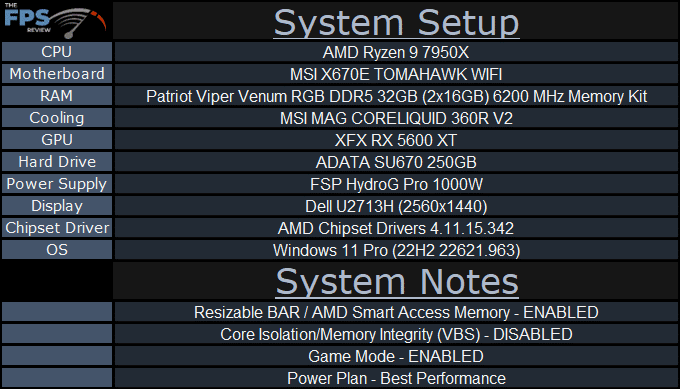
Introduction
On our test bench today we have the MSI MAG X670E TOMAHAWK WIFI socket AM5 motherboard. This is a new motherboard that sits on the lower end of the X670E price range and can currently be found on Amazon for the low $300s.
The MSI MAG X670E TOMAHAWK WIFI is based on AMD’s X670E chipset, this is the top-of-the-line chipset currently on offer from AMD. With this chipset, you will natively have PCIe 5.0 for the M.2 slots, as well as the main PCIe slots, for a total of 20 PCIe 5.0 (of a maximum of 24 for this platform), which is on par with other X670E motherboards. Similar to the previous current generation AM5 motherboards, the B650/B650E/X670E, that we have reviewed the main M.2 slot is using PCIe 5.0 lanes directly from the CPU.
Packaging and Contents
With the MSI MAG X670E TOMAHAWK WIFI being a more value-conscious X670E motherboard we were not expecting much in the way of accessories or add-ons in the box, which is what we found. In the box, you will find two SATA cables, one (1) M3 screw, three (3) M2 locker screws, an antenna for the WiFi, some paper guides/information, and a sheet of stickers to cover your battery or label various items. All the necessities, really.
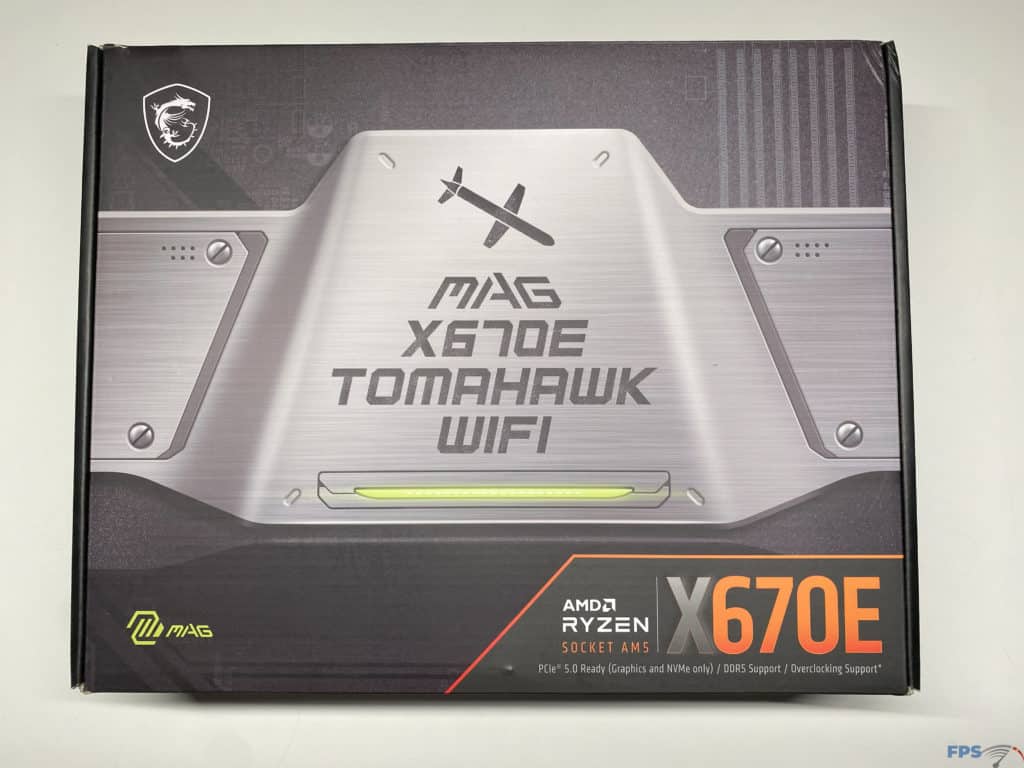



MSI MAG X670E TOMAHAWK WIFI PCB & Features
The overall layout and construction of this motherboard are around what we would expect from a motherboard looking to compete in the higher-end performance tier. This is a well-built motherboard, with a hefty cooling solution on the digital VRMs, as well as cooling provided for the chipset and three of the four M.2 slots. While we appreciate having cooling provided for M.2 slots, especially the M.2 Frozr for the topmost slot, we need to point out that the larger plate for the 2nd and 3rd slots had some issues indexing to screw back in, or getting off, nor was it very clear that the Frozr shield was the retention mechanism for these slots (you do not need to install any of the M.2 locker screws here).
Also although we appreciate having the large heat spreader for the PCIe 5.0 slot, we once again have an issue with its proximity to the uppermost PCIe slot for a graphics card, specifically, it can be tricky to remove a graphics card with a backplate installed, this is disappointing to see on a X670E motherboard like this one as this is something we to date have only seen on lower end budget motherboards.
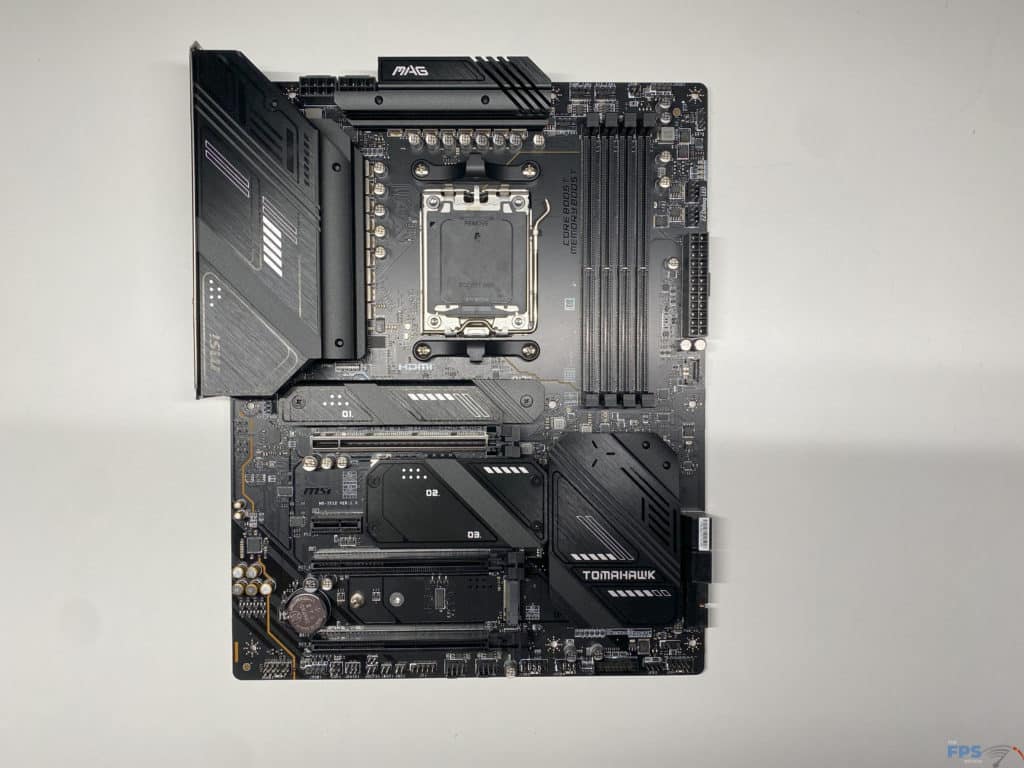
With this motherboard being targeted to bridge the gap between the B650E motherboards and the higher-end X670E models MSI has gone with a Duet Rail Power System (DRPS) with a 14+2+1 power delivery for the design for 80 Amp Power Stage from dual 8pin power connectors. This differs from the higher-end MSI MEG X670E ACE that we previously reviewed which had a 22+2+1 delivery for 90 Amps, but this is expected when factoring in the price difference.
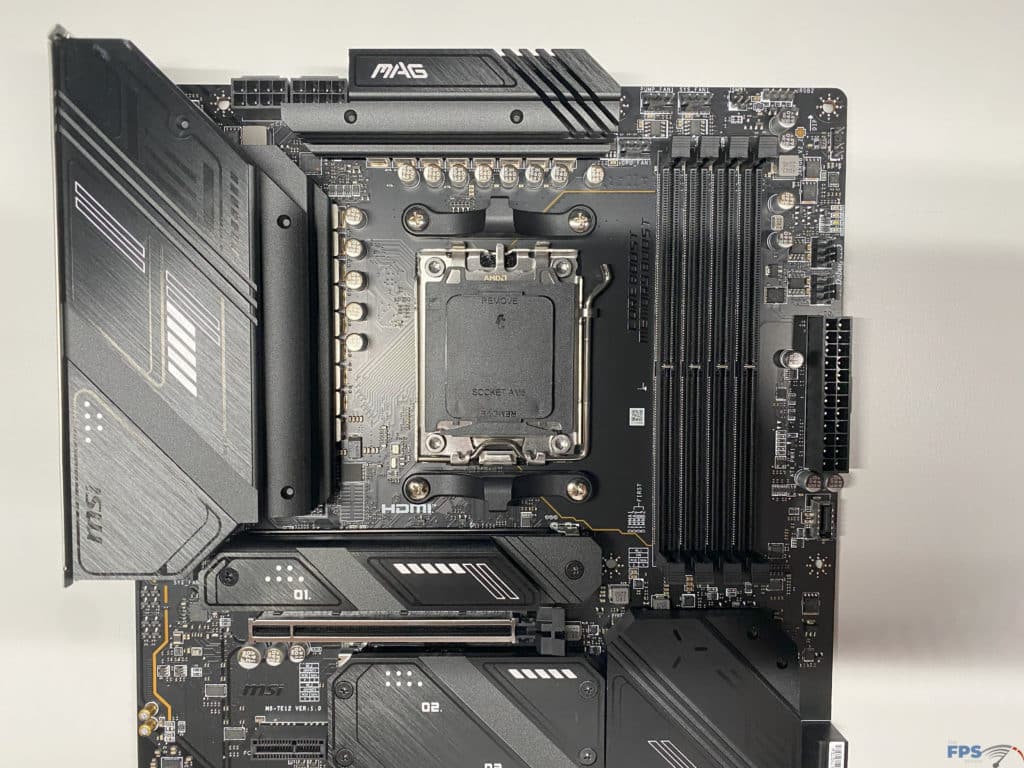
On the rear I/O, we have connections for a 2.5 GbE LAN, powered by a Realtek RTL8125B, two (2) antenna ports, two (2) USB 3.2 Type-C ports (One at 10 Gbps with DisplayPort Alt Mode, and one 2×2 20Gbps), six (6) USB 3.2 Type-A ports (two at 10 Gbps, and four at 5Gbps), five (5) audio jacks, one (1) S/PDIF connector, a DisplayPort connector, a HDMI connector, and a Flash BIOS Button to allow for BIOS recovery with no CPU or memory installed.
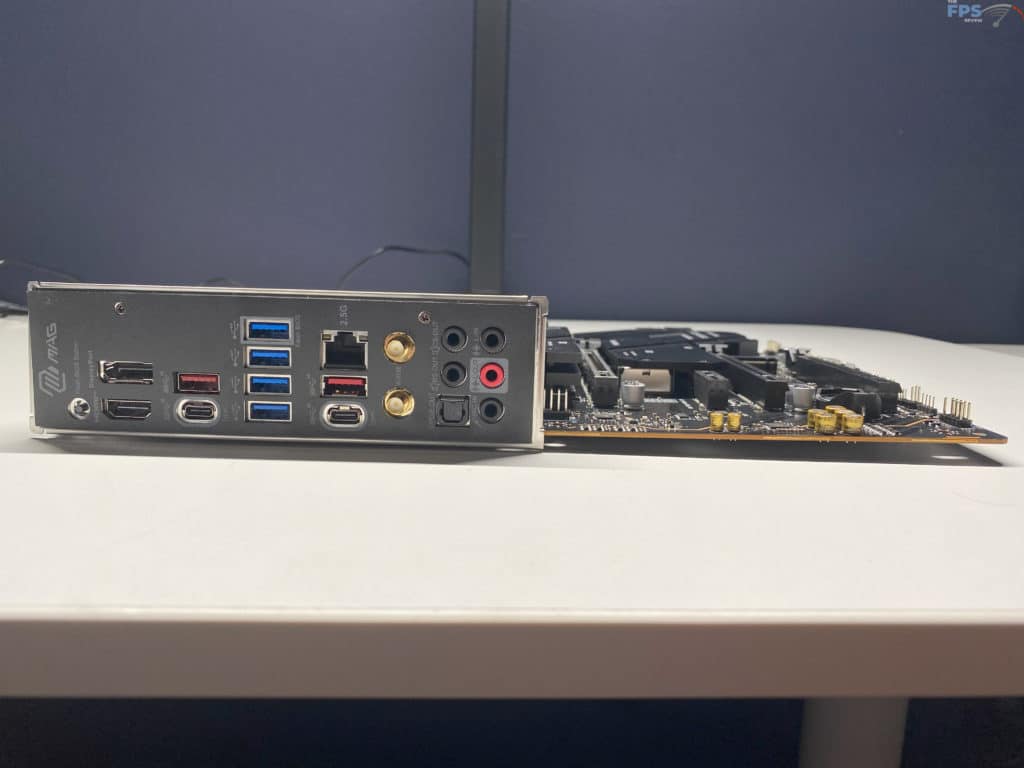
For storage on this motherboard, we have four (4) SATA 6GB/s ports from the X670E chipset, and an additional four (4) M.2 slots allowing for installation of drives up to Type 22110 (top slot only, all others are maximum Type 2280) in size, covering the majority of storage devices on the market today. The top slot, M2_1, is the only one served by the CPU at PCIe 5.0, while the remaining three (3) are PCIe 4.0 from the X670E chipset. You will want to install your fastest SSD in the top slot to take advantage of the PCIe 5.0×4.
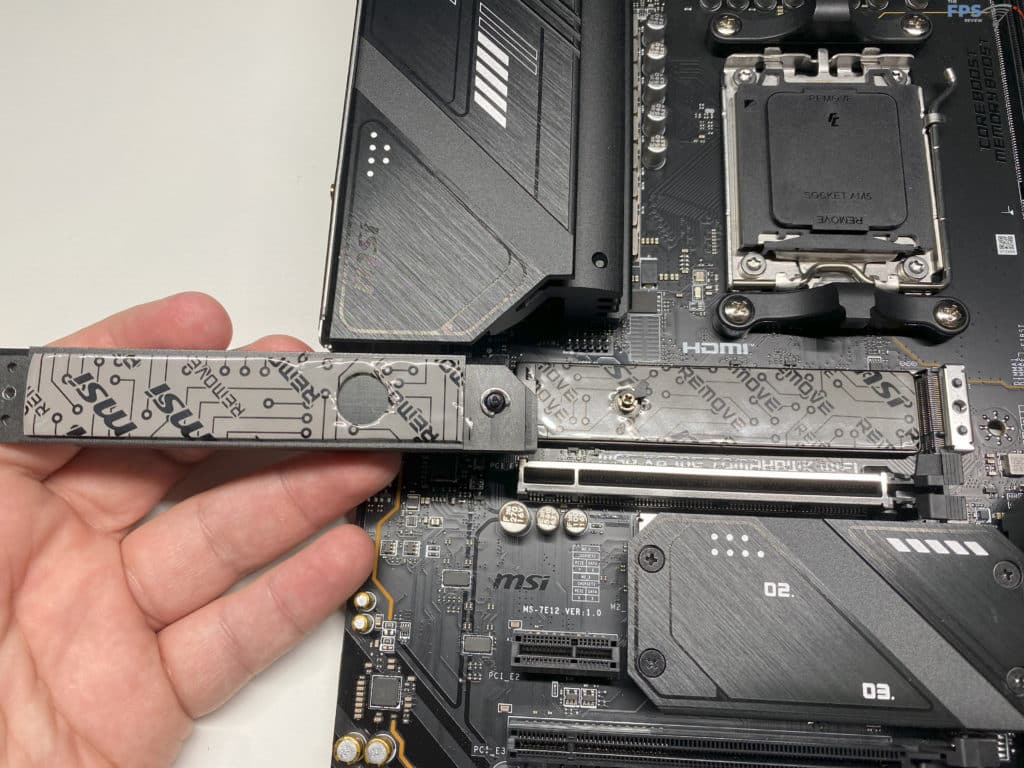
Expansion slots on this motherboard are via four (4) PCIe slots, the top slot is the only one with PCIe 5.0 support while also having metal reinforcement which while being common now is nonetheless nice to see. The second and fourth slots are both PCIe 4.0 compatible, with the final PCIe x1 slot supporting PCIe 3.0 only. One thing to note is that the bottom PCIe slot shares bandwidth with the bottom M.2 slot, which when both are in use the M2_4 slot (The bottom M.2 slot) will operate at x2 speed only.
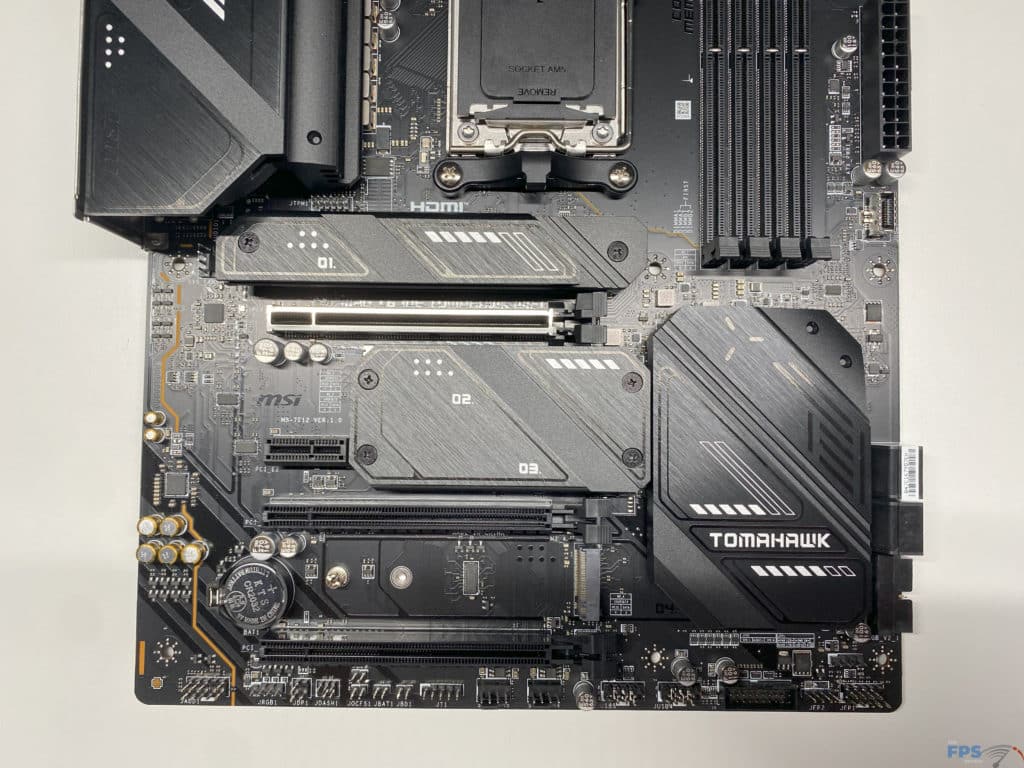
Additionally, there is plenty of expansion from the internal headers where we find a single USB 3.2 Gen 2 Type-C connector (10Gbps), two 3.2 Gen 1 5 Gbps connectors (a total of four ports), and two more USB 2.0 connectors (a further four ports).
This motherboard has a total of eight (8) 4-pin fan-type connectors, six (6) are for system fans, one (1) is for a CPU fan, and the last is for a water pump. These connectors are all located in areas that are easy to access and provide plenty of options for fan mounting and connection. Additionally, all of these connectors are controllable via the motherboard’s BIOS with curves of your choosing, or you can enable the Frozr AI Cooling that will automatically adjust system fans to keep your system cool. For our testing, we set the fans and pump to 100% to help minimize the factor heat plays in our testing.
As with most current gaming motherboards, there are plenty of RGB connections and control options. You will find two (2) 4-pin RGB LED connectors, and two (2) more 3-Pin ARGB Gen2 connectors, all of which are controllable by the MSI software suite.
As with all of AMD’s B650 and X670-based chipsets, this motherboard only supports DDR5 memory. Specifically this motherboard has four total slots with a maximum capacity of 192 GB. There is support for speeds of 6000+ MHz, with only non-ECC / un-buffered memory being supported. This motherboard allows AMD EXPO (A-XMP) profiles for the memory, which are readily available within the BIOS as soon as you boot to use.
For Audio the MSI MAG X670E TOMAHAWK WIFI uses the Realtek ALC1200 Codec, providing 7.1 channel sound, and supports S/PDIF output.
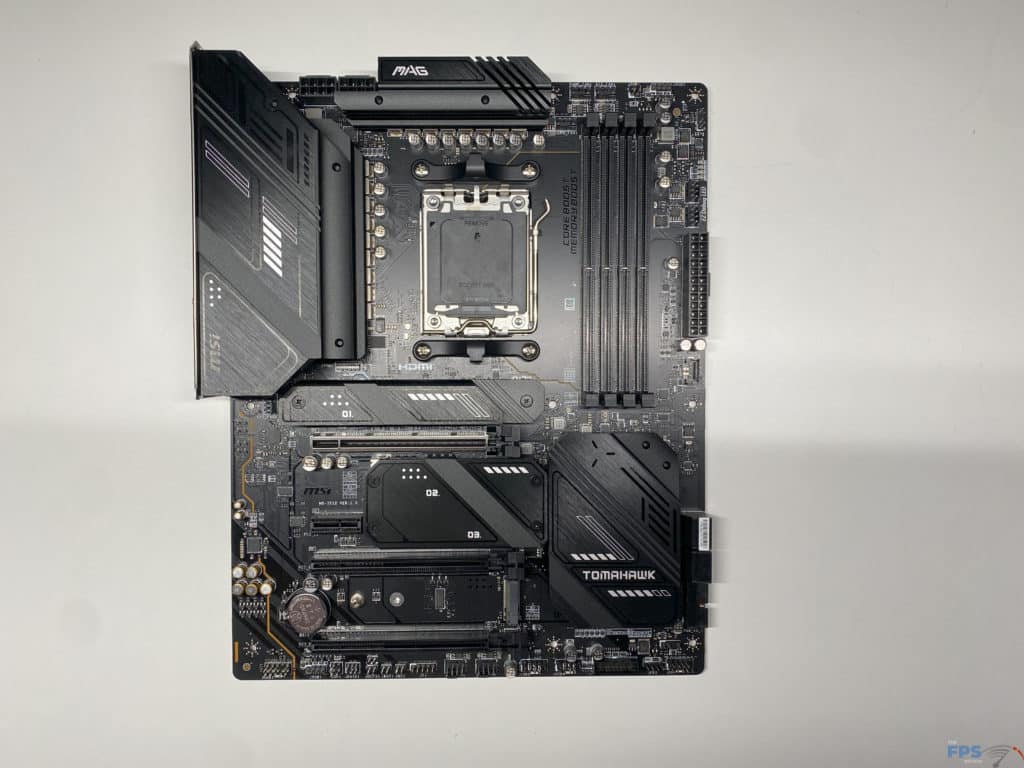


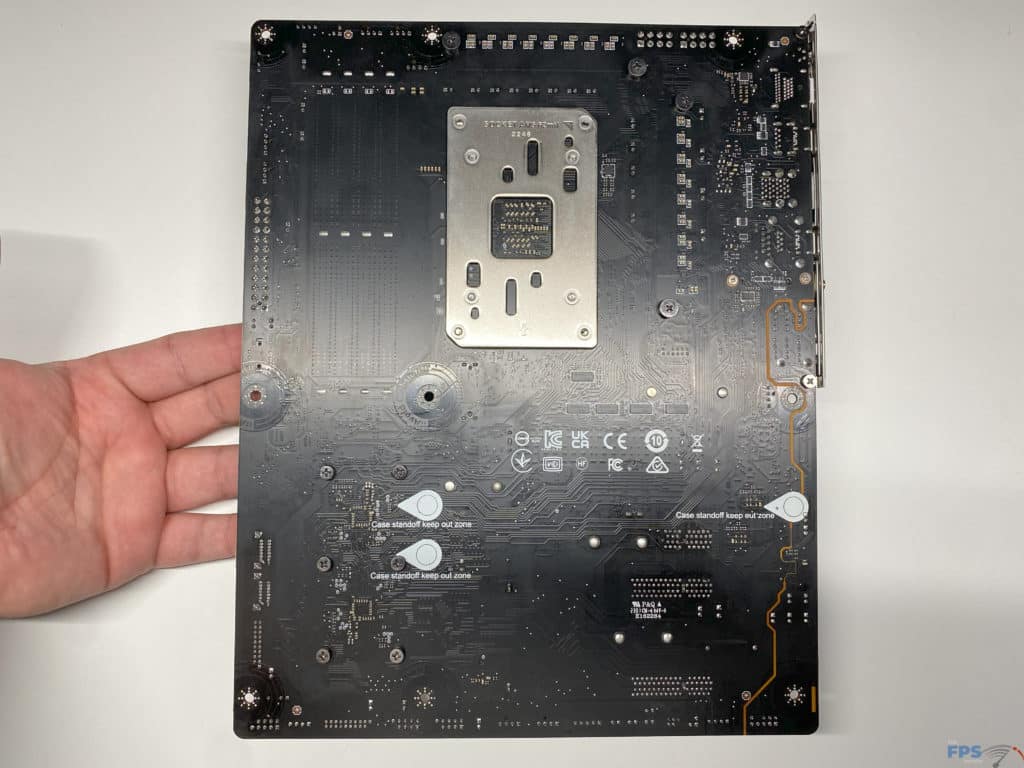
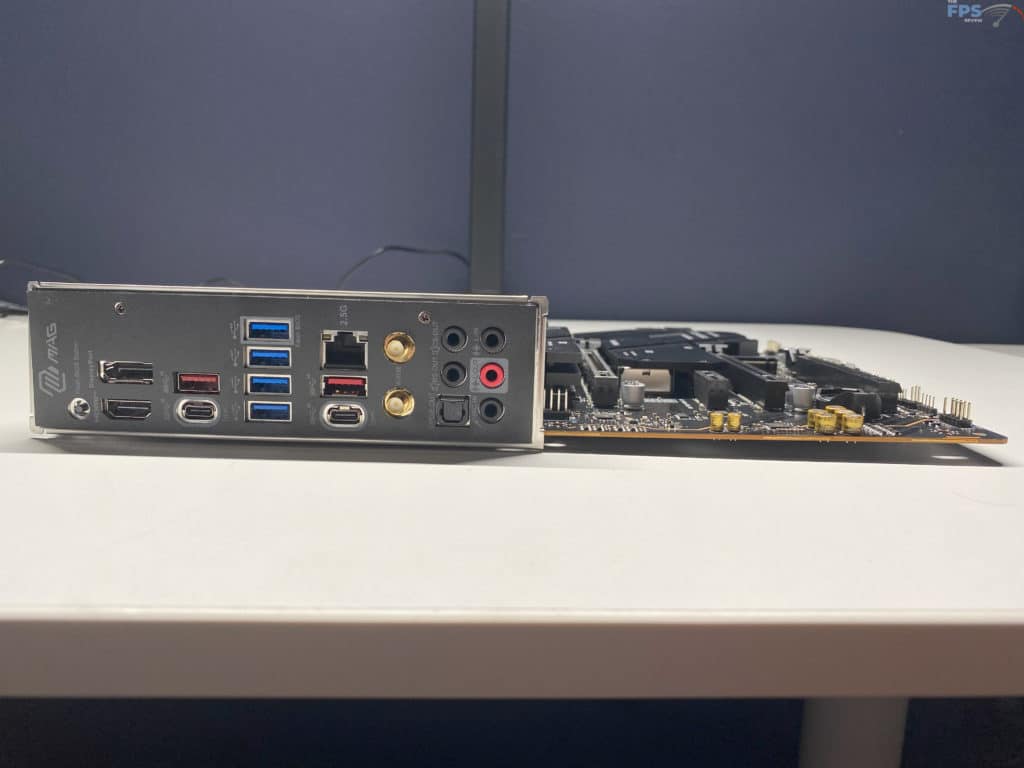
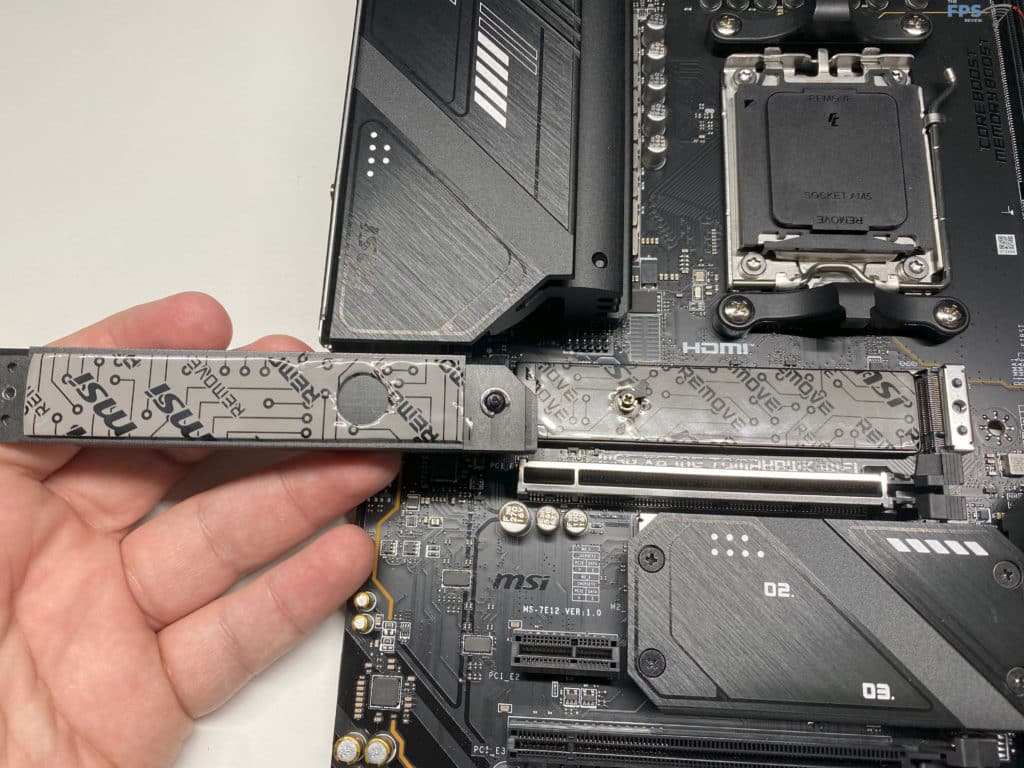

BIOS
The MSI MAG X670E TOMAHAWK WIFI features a single 256 Mb American Megatrends Inc. (AMI) UEFI BIOS. Prior to testing, we upgraded our BIOS to the latest stable version, 7E12v13 released on Mar 26th, 2023. All of our testing and images were done after this BIOS update. It is important to note that this BIOS includes the AGESA ComboPI 1.0.0.7a patch, so it won’t be affected by the recent release of bad BIOS images that caused some AM5 motherboards to over-volt the CPUs.
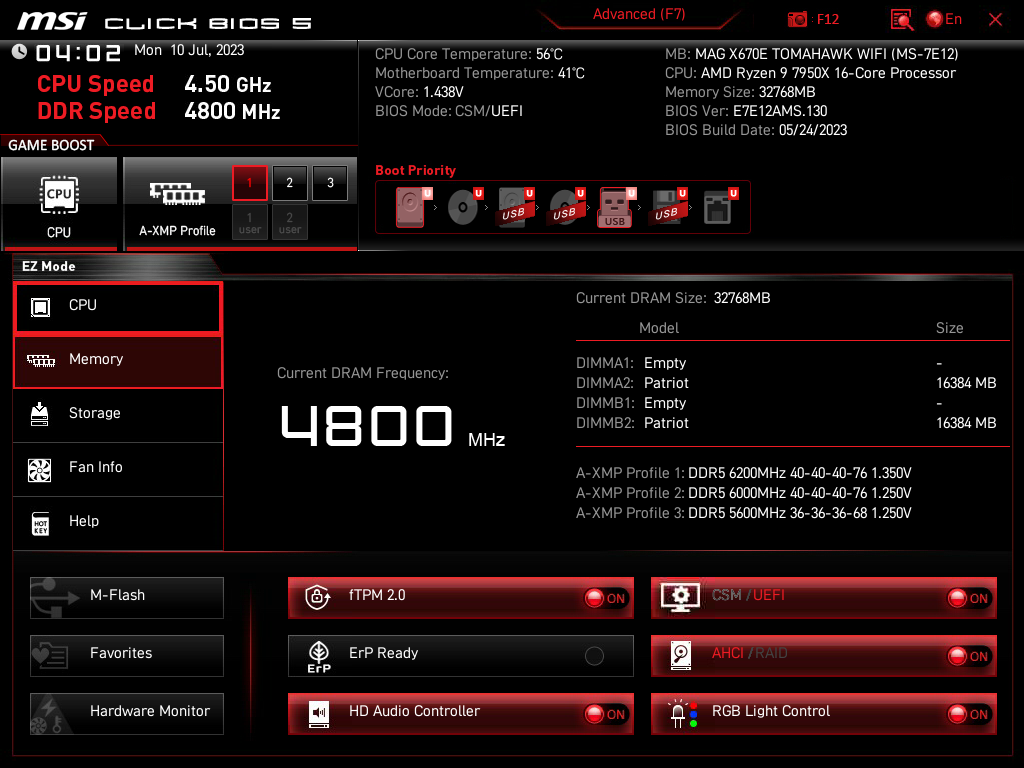
Those who are familiar with previous generation MSI products, both Intel and AMD, will see large similarities in the UEFI BIOS interface here. There will be some changes, however, everything will be right where you expect to find it. When diving into the BIOS we had trouble finding any notable difference in navigation between this and the previously reviewed MSI MEG X670E ACE, which is a good thing for sure as it allowed easy navigation.
When you first enter the BIOS you are greeted with the “EZ Mode” page that gives brief overall information on the motherboard, allows slight adjustments to the XMP profiles, and adjustments to the boot priority. Hardware monitoring is available in both “EZ Mode” and “Advanced” (You can toggle between these by hitting “F7”), which will allow you to set your own custom fan curves, or force your cooling solution to full speed. We will touch base on the highlights of the BIOS, however since it is so similar to previous motherboards we will rely on the gallery at the bottom of this section to show more in-depth options available.
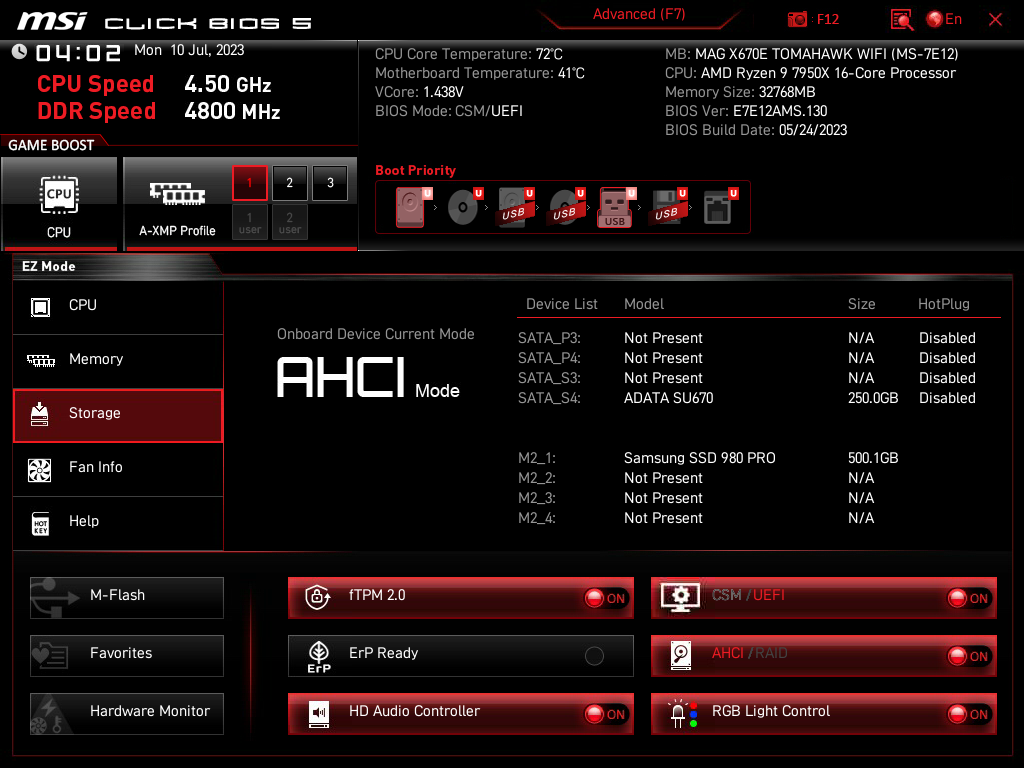
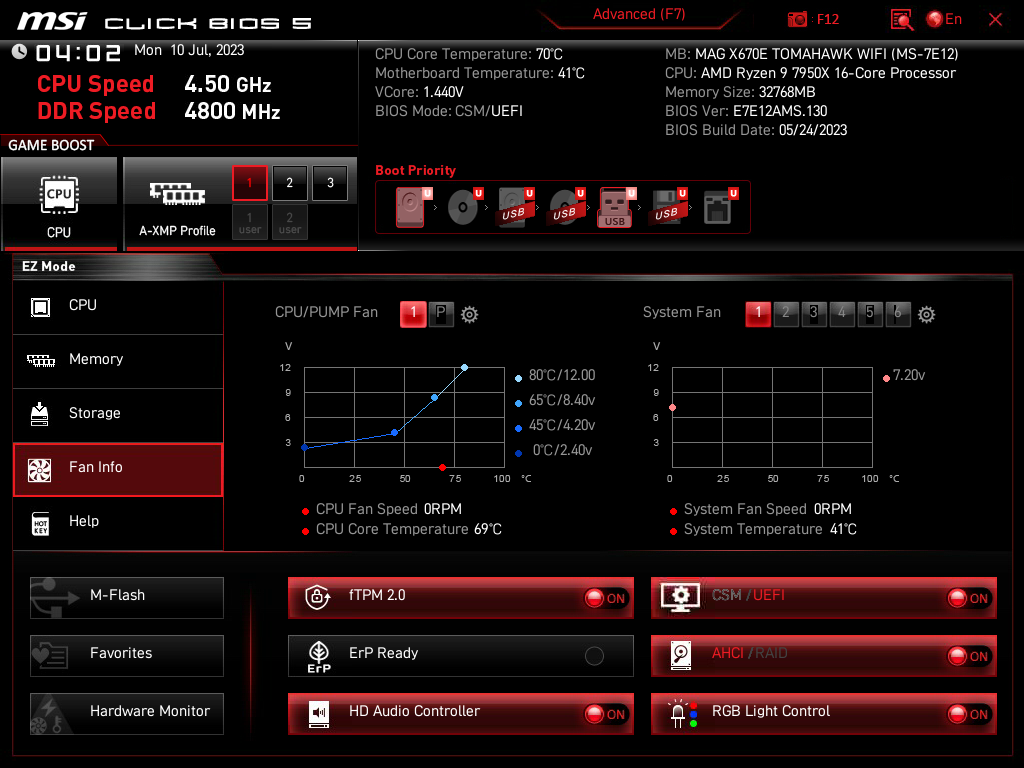
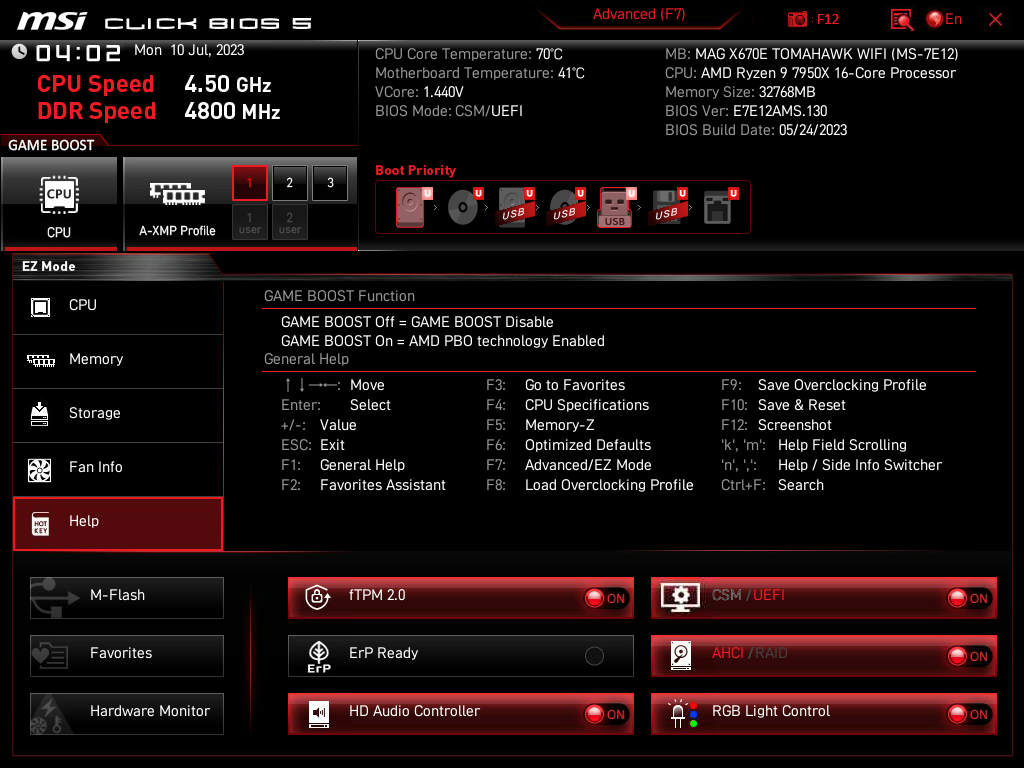
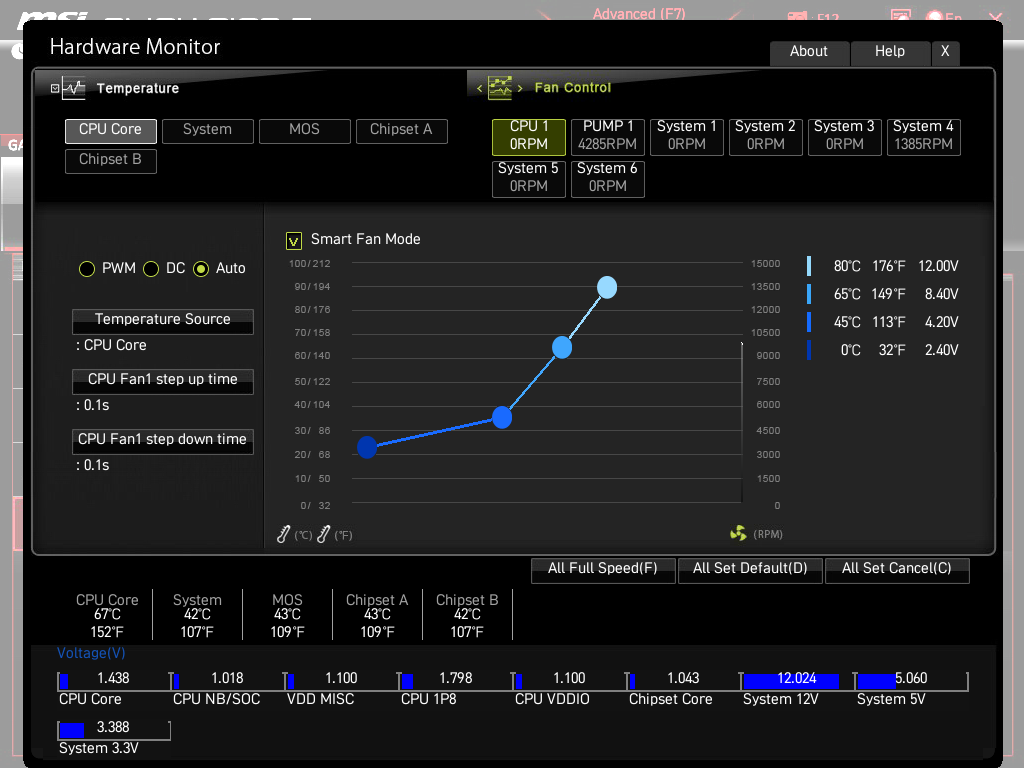
Most of the users looking to use this motherboard will be looking to overclock their CPU and will be looking to overclock their motherboard. These settings can only be found in the Advanced section in the Overclocking settings or the “Settings\Advanced\AMD Overclocking\AMD Overclocking” menus. We left all of the PBO settings at default, and as typical we ran into a wall at just around 5.1 GHz with our 7950X CPU.

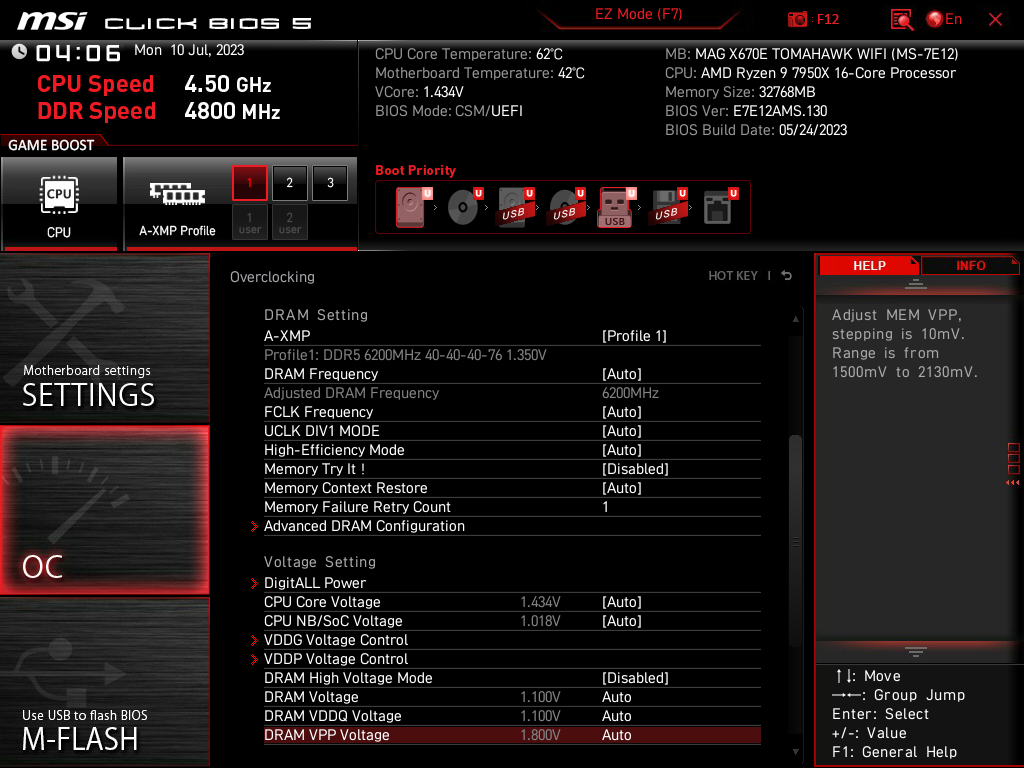
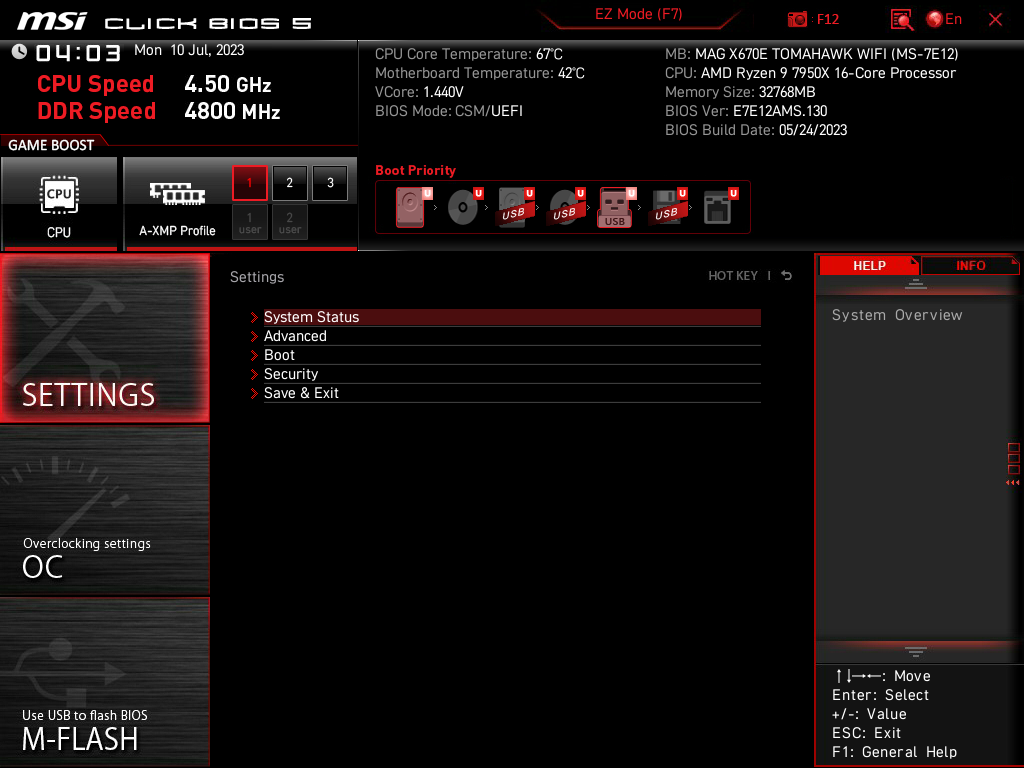
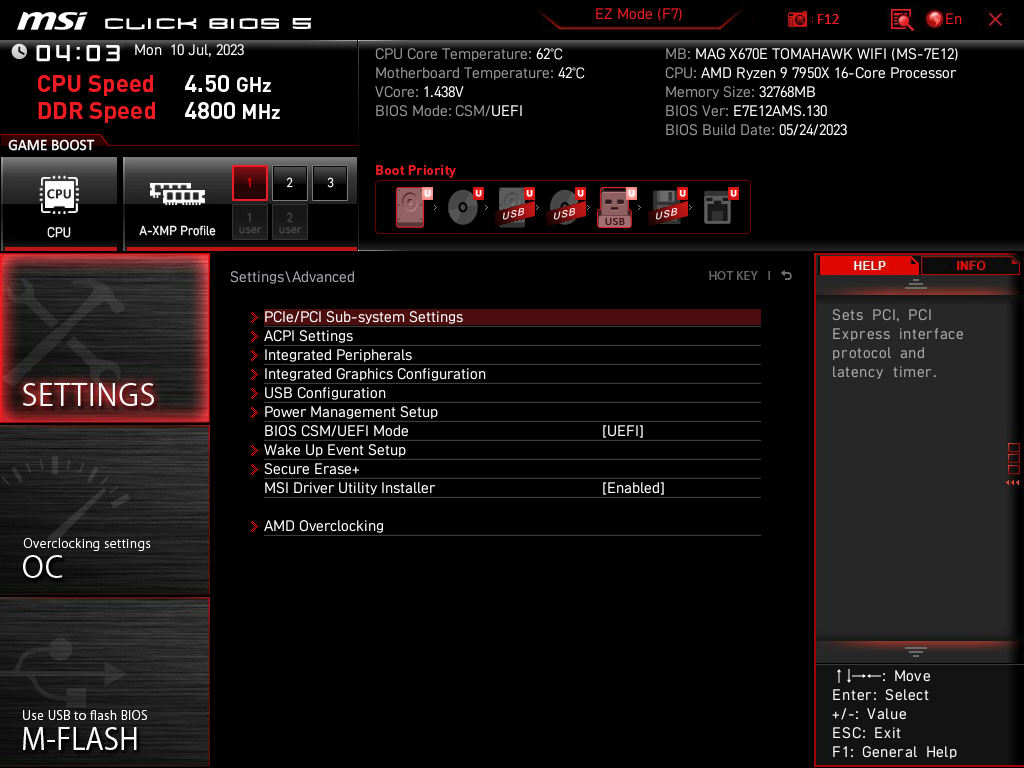
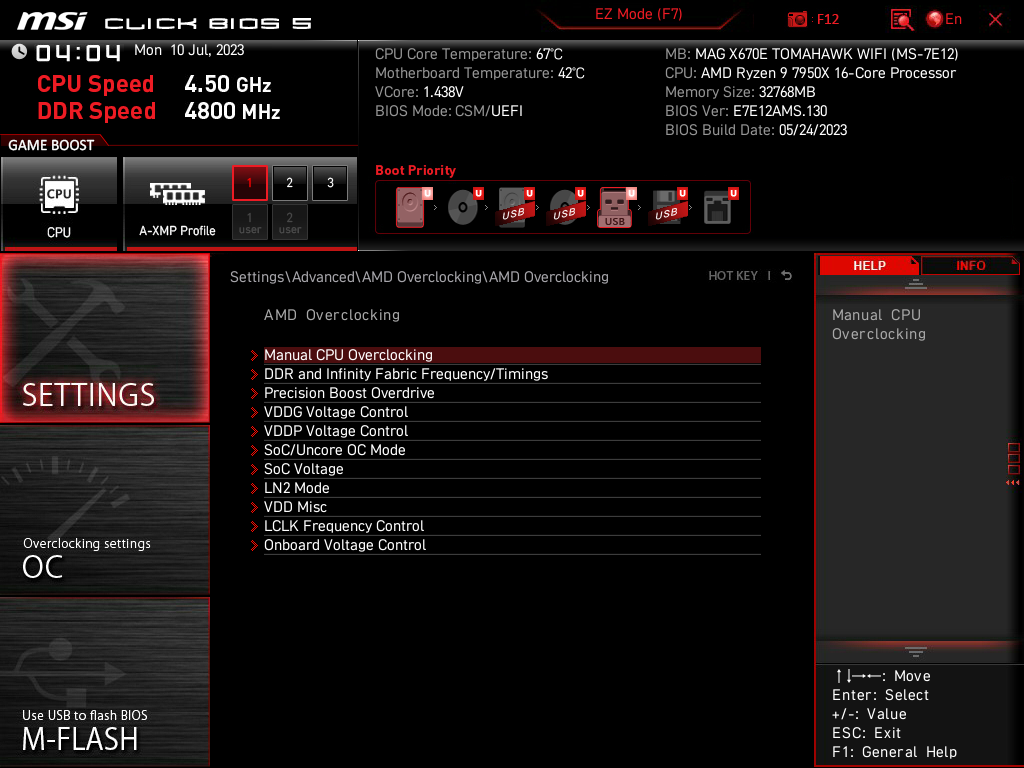
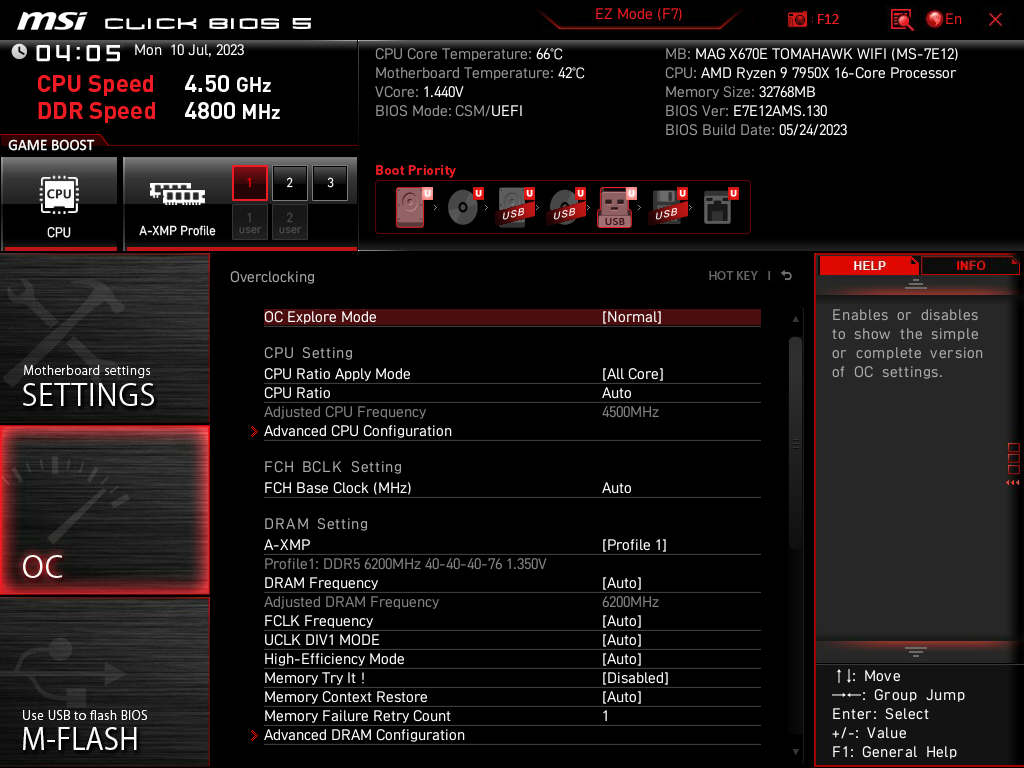
Test Setup
We have the latest BIOS installed, 7E12v13, dated May 26, 2023. All of our testing was performed at the default settings from the BIOS with the exception of the memory, here we set the DRAM to the A-XMP-1 profile for full speed on our memory.
For the OS setup note that we are on the latest H2 Windows 11 update with all incremental Windows updates applied at the time of writing.
Due to us having a maximum speed of 5.1 GHz all-core speed during testing, we are going to be providing only one set of data measurements for the MSI X670E TOMAHAWK WIFI, and notate any large departures performance-wise from what we expect based on previous testing.
Subsystem Testing
DPC Latency
The highest measured interrupt to Process Latency after a 10-minute run time was 118.0, and over three runs we averaged 101.4, these numbers are around twice what we experienced with the MSI MEG X670E ACE, and even the GIGABYTE B650 AERO G.
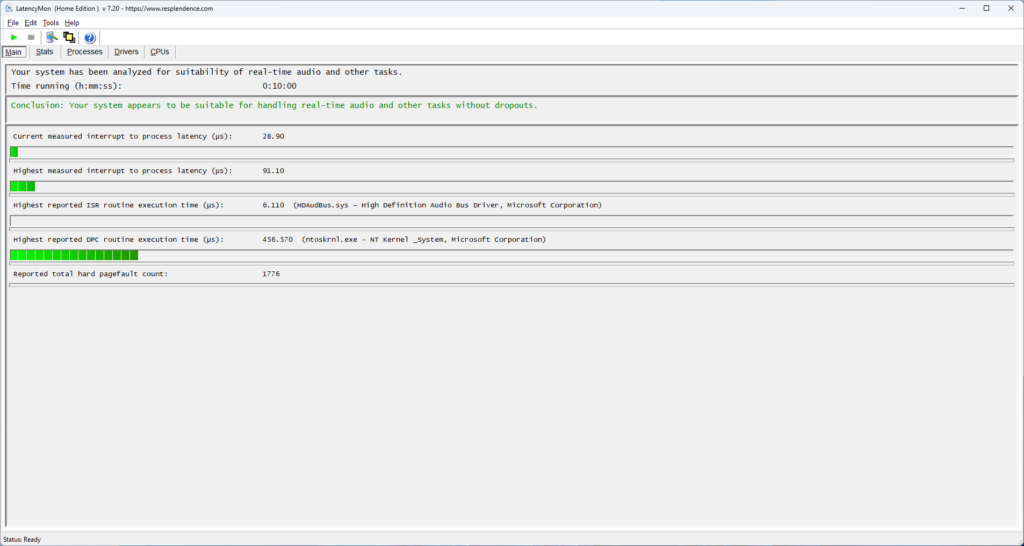
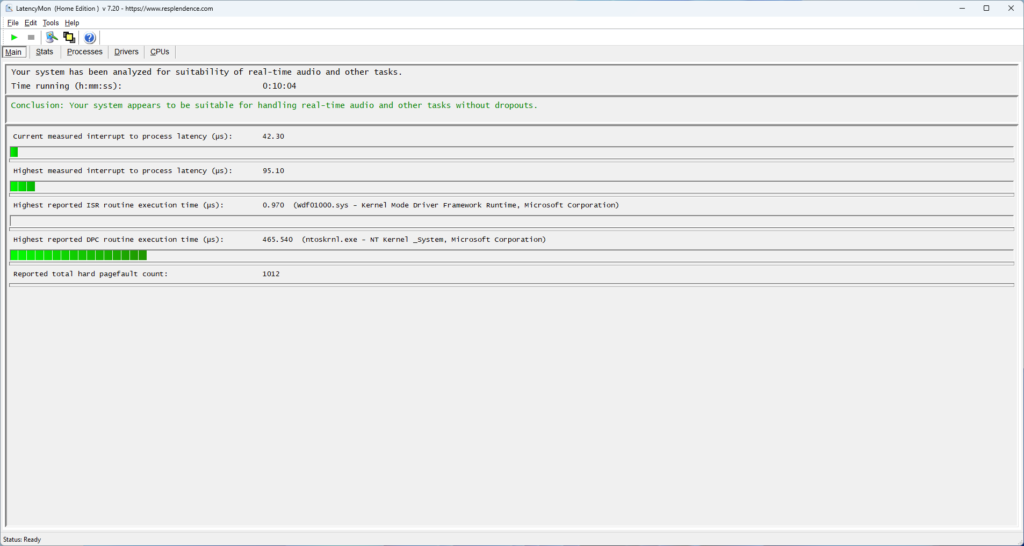

SSD Performance
For this motherboard, we tested all four slots and saw similar performance between all of the slots as we would expect since the Samsung 980 Pro 500GB M.2 NVME SSD we have for our test bed is a PCIe 4.0 drive. For the PCIe 5.0 slot, we saw a maximum of 6751.05 MB/s read, and 4911.08 MB/s write, which is in line with all other AM5 motherboards we have tested to date. This trend follows with the remaining PCIe 4.0 slots where we are seeing right around 6544.72 MB/s read and 4866.43 MB/s on the high end of speeds recorded. Interestingly enough the highest speed of the PCIe 4.0 slots was in M2_4 which is the only slot without MSI’s Frozr cooling solution.
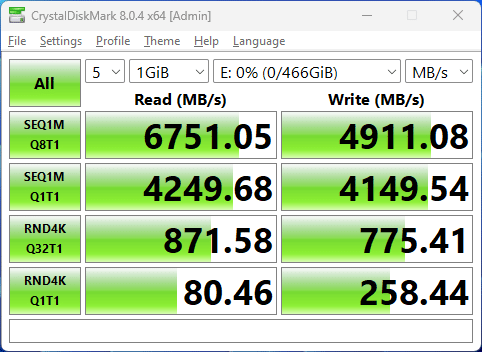
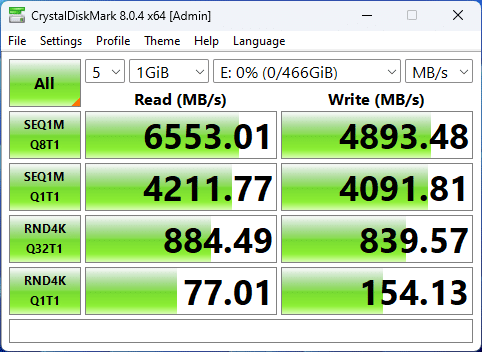

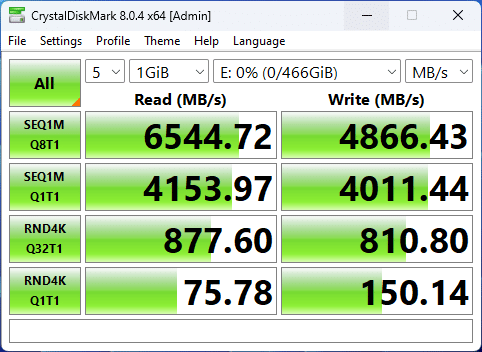
Application Benchmarks
Memory Bandwidth
For our application benchmarks, we are going to start with Aida64, and its memory read and write performance test. At the default settings, with the memory set to 6200MHz, the read performance on this motherboard is 74,047 MB/s of bandwidth, which is in line with most of the AM5-based motherboards we have tested to date, while the write performance comes in slightly under others we have tested at 77,560 MB/s, coming in at the second highest speed we have tested at, even beating out its bigger brother the MSI MEG X670E ACE.

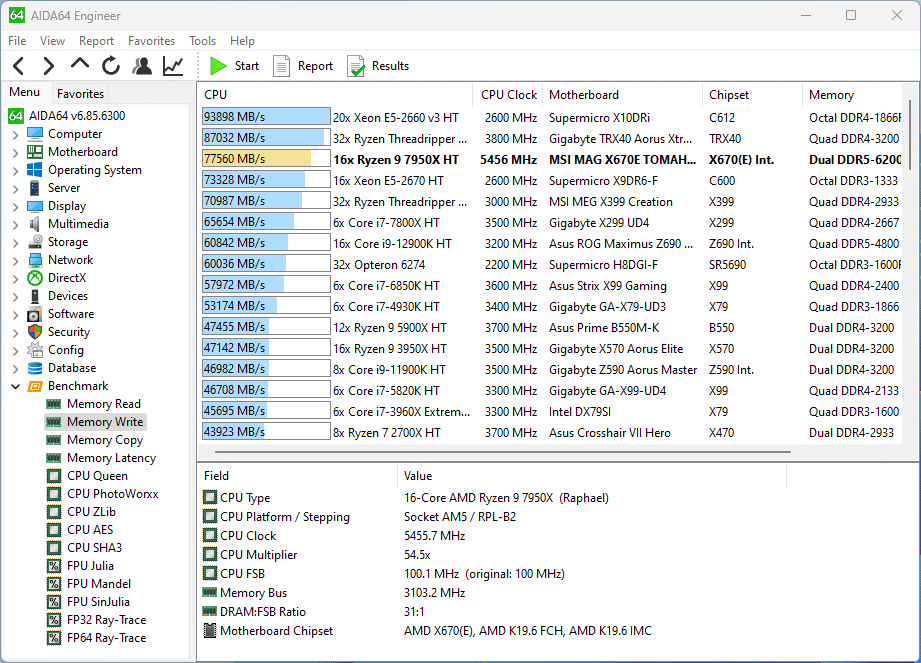
PCMark 10
The standard PCMark 10 test result that we were able to achieve is 9,250, which is about 10 % less than we saw on our initial 7950X Review ( AMD Ryzen 9 7950X CPU Review – Page 3 of 9 – The FPS Review ), however, take caution with comparisons as we were also able to achieve higher clock speeds with PBO in that testing.
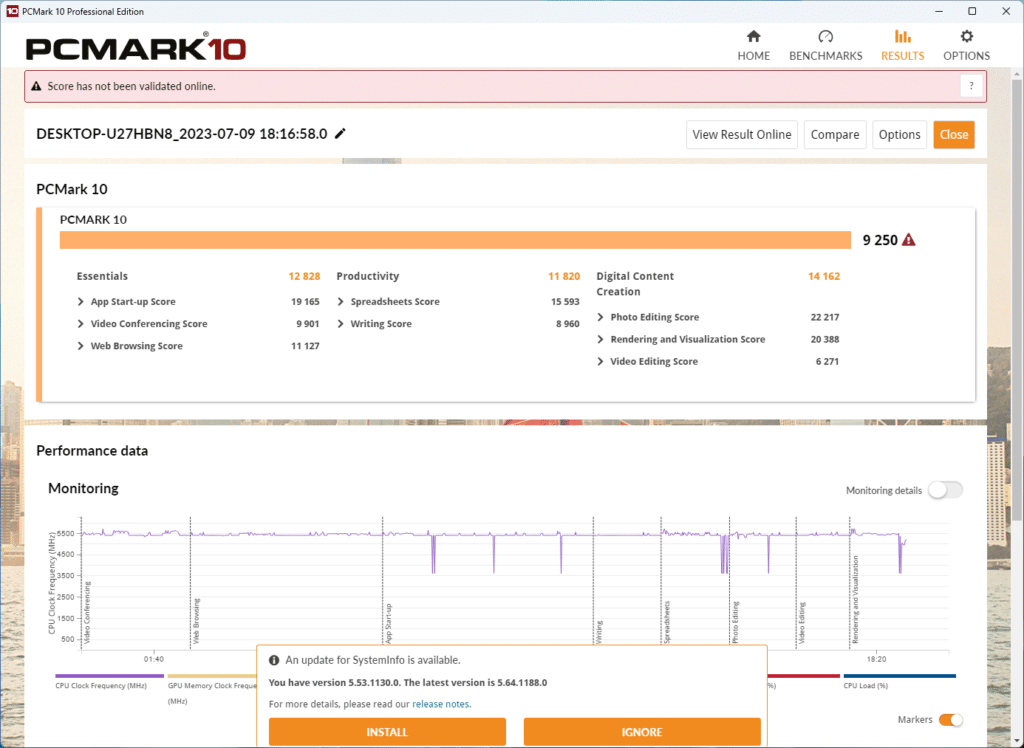
Cinebench R23
With Cinebench we ran the multi-core test multiple times and consistently received a score of around 36,414. This is the second lowest score we have achieved to date with our 7950X CPU, and not what we expected in comparison to even the B650-based motherboards we have tested.
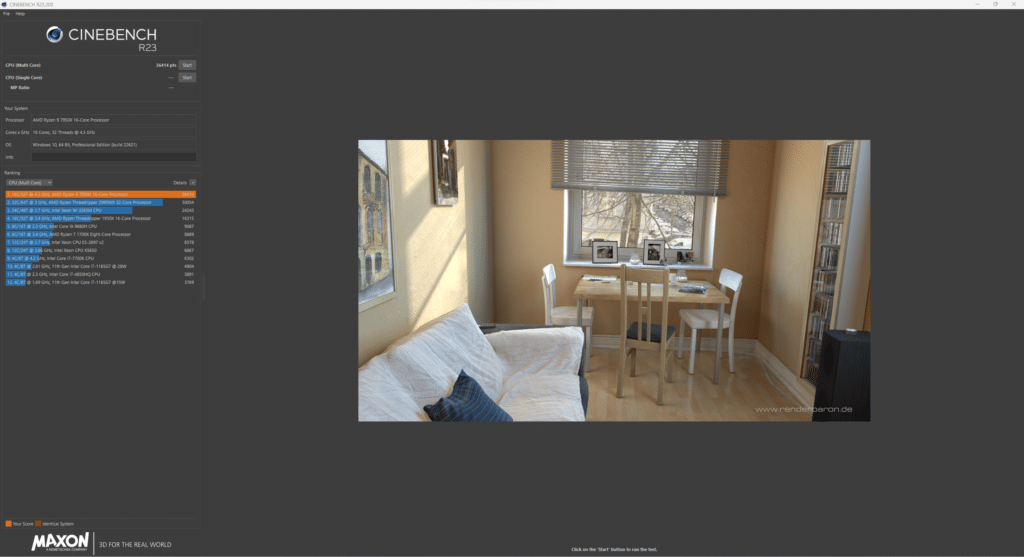
Blender Benchmark
With Blender, we were able to achieve 265.19 samples per minute for the monster test, 174.26 for junkshop, and 130.96 for the classroom tests. These values are around what we expect to see but it should be noted this slots us performance-wise slightly below the two B650-based motherboards we have reviewed (the GIGABYTE B650 AERO G and the ASRock B650 Pro RS), which we did not expect to see considering this is an X670E motherboard.
3DMark
We ran both Time Spy and CPU Profile tests with 3DMark. With the Time Spy test, we achieved a 14,678 score, and for the CPU profile on max threads, we achieve 15,650. These are right in line with all of the other AM5-based motherboards we have tested to date.
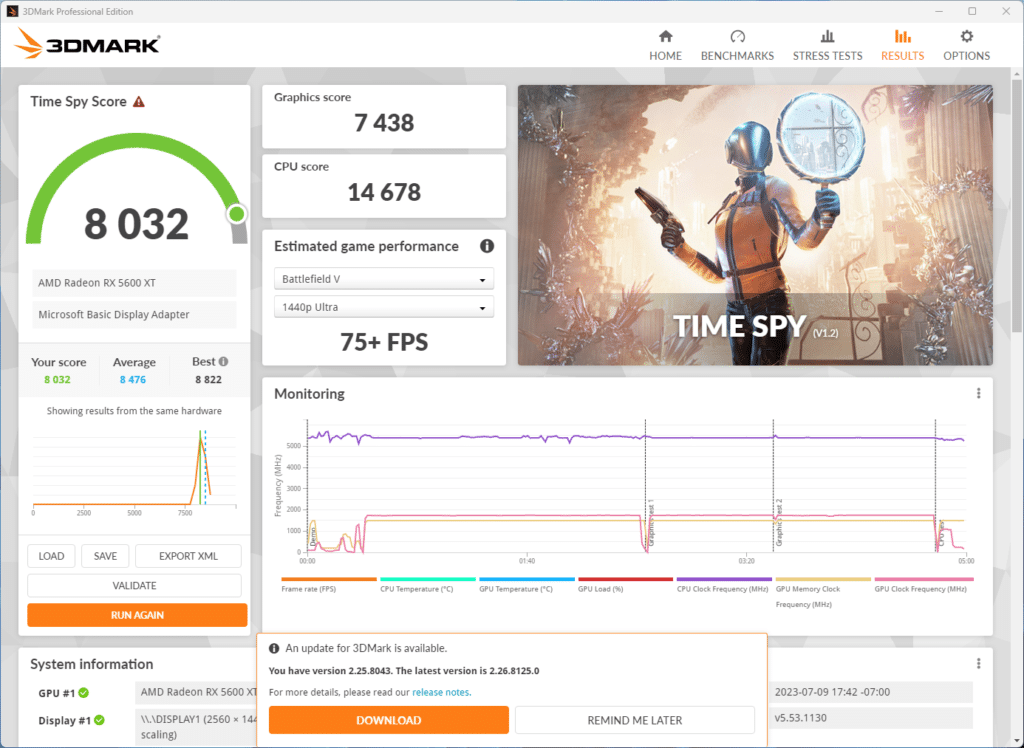
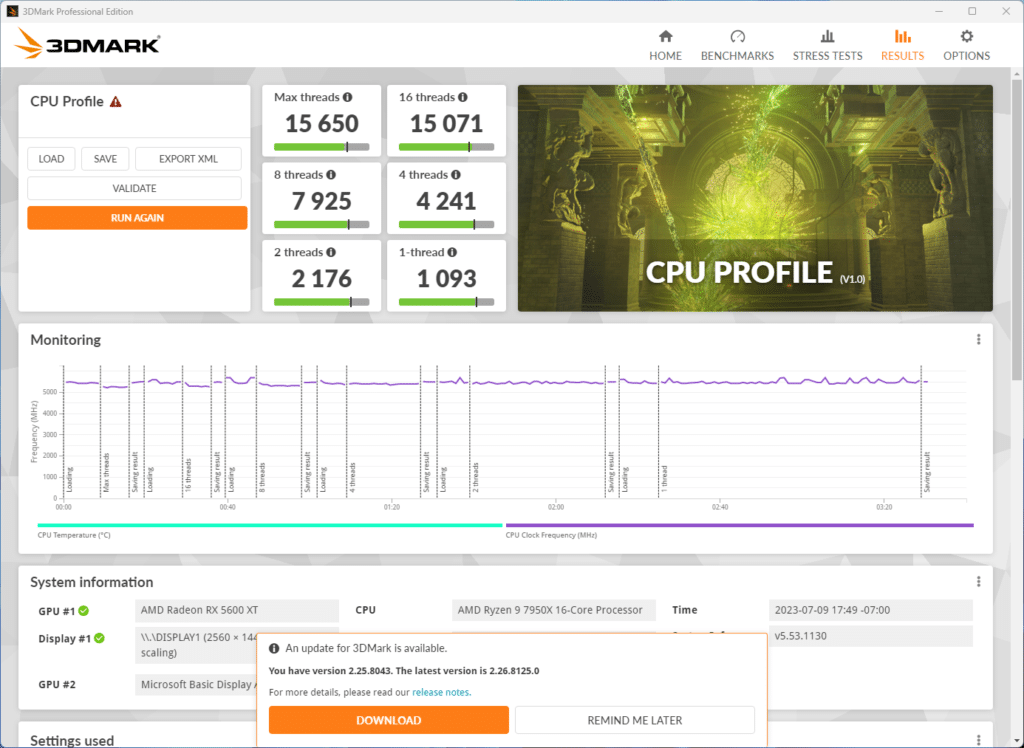
V-Ray Benchmark
Running V-Ray we achieved a score of 28,665, again this is right in line with what we would expect.

Conclusion
Today we have evaluated another AMD X670E-based motherboard the MSI MAG X670E TOMAHAWK WIFI, which is a mid-range ATX motherboard selling on Amazon in the low $300 range. Even though this is not a high-end X670E motherboard, it has a very robust cooling design for its VRMs and MOSFETs and even has cooling for three (3) of the M.2 drive slots. Additionally, there are many features you will find on much more expensive motherboards, such as extra fan connectors, and multiple RGB connection points.
Installation and Use
Physical installation of this motherboard was about what we expect for any ATX motherboard, and its locations for fan headers and power connections are exactly where we like to see them. However, as we mentioned earlier in the review, once the system is fully assembled you may run into issues removing your GPU if it has a backplate on it, and you have the heat sink installed for the M.2 drive in the topmost slot.
Beyond this, the BIOS was very user-friendly and easy to navigate as everything was located where we expected to find it, and readily available to be adjusted. On top of this, we had no issues doing a BIOS upgrade as the process went flawlessly from a few versions back to the most up-to-date BIOS.
Final Points
Today we have evaluated a good value-conscious AMD X670E chipset-based motherboard, the MSI MAG X670E TOMAHAWK WIFI, an X670E motherboard that is intended for the value-conscious but still retains all the high-end features you want in an X670E motherboard. During our testing this motherboard took everything we could throw at it with no issues, was rock solid for all testing under load, all of the drivers worked out of the box, the RAM operated at full speed and matched the performance of most of the motherboards we have tested to date, and had no surprises.
For a motherboard selling for $309 on Amazon at the time of publishing, we would have expected the performance to exceed that of the B650E motherboards we have previously reviewed. We also would have hoped to have a slightly more user-friendly design for the M.2 slots, specifically with regard to the PCIe 5.0 slot’s location. It should be noted that the decrease in speeds for the synthetic benchmarks could be caused by the AGESA upgrade to 1.0.0.7 Patch A in the BIOS versus previous motherboard reviews, which our earlier reviews did not have. The new AGESA can affect CPU performance, and may not be directly comparable to past AGESA versions. Therefore, it is more of a software change, than anything to do with the motherboard hardware. These slightly slower synthetic speeds should not account for any actual real-world usage changes you will be able to notice.
The MSI MAG X670E TOMAHAWK WIFI is packed with plenty of features, the 2.5 GbE LAN, WiFi 6E out of the box, multiple USB 3.2 Type-C connectors for 20 Gbps speeds, plenty of Type-A USB ports, four total PCIe slots, and a whopping four M.2 slots, puts the value of this motherboard near the top of those we have reviewed to date. If you are looking for a motherboard that won’t break the bank, but still gives you all the top-end enthusiast features that the AMD X670E chipset provides, then make sure to check out the MSI MAG X670E TOMAHAWK WIFI motherboard.



